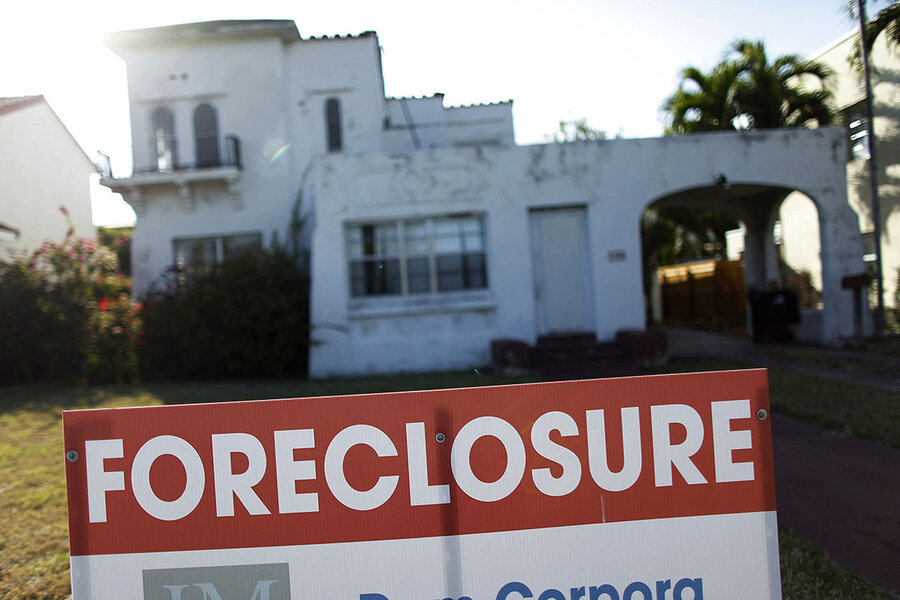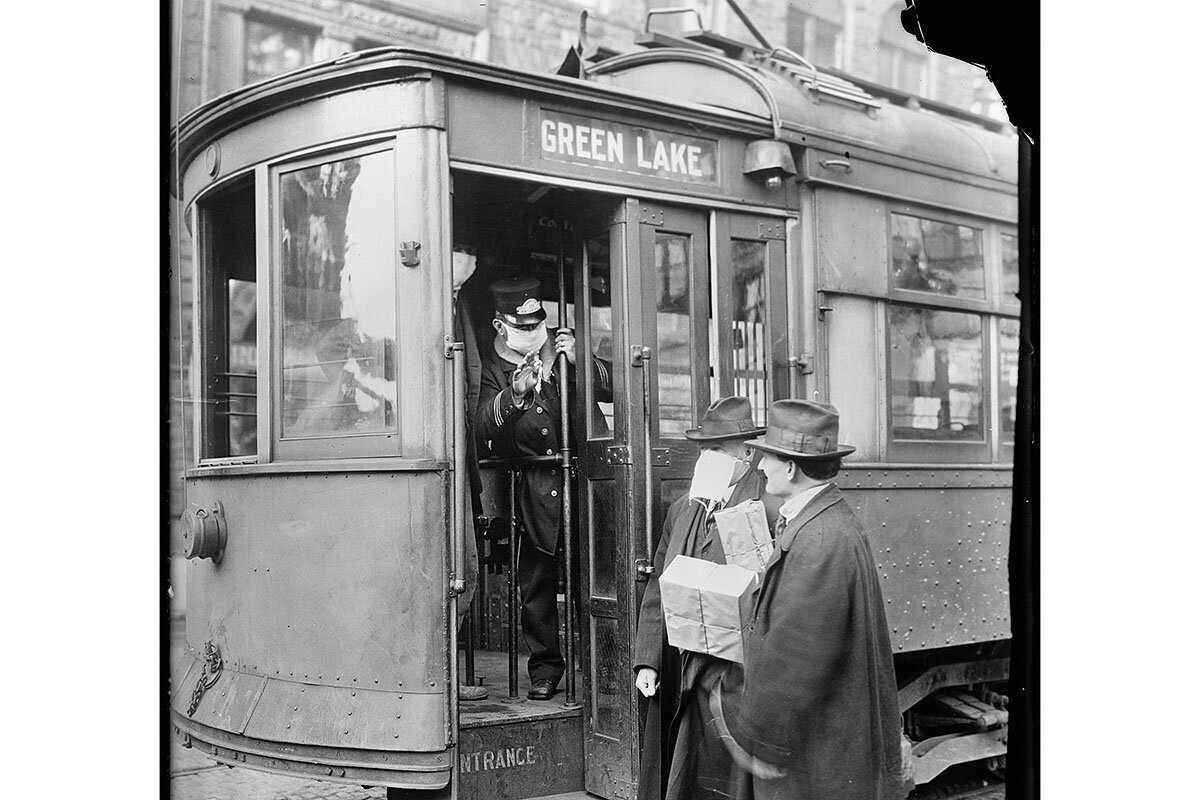Coronavirus and recession: How is this economic crisis different?
Loading...
In its speed and its depth, this new global recession really is different from those that came before.
That’s how economists view the near shutdown of economies across major portions of the world due to the coronavirus. And they say it means the solutions should be different too.
Unlike the housing market and banking meltdown of 2008, this is a contagion affecting public health that has hit the global economy much more suddenly.
Why We Wrote This
The United States has been through both pandemics and recessions before. But while they offer some insights into what the coronavirus is doing to the economy, the current situation is unique.
How about the 1918 Spanish flu? That was another serious pandemic, in fact one where the deaths totaled an estimated 2% of world population. But this time around, the economic toll comes from conscious efforts to stop a disease before it gets that bad.
The unusual nature of this crisis has implications for the policy responses now underway in Congress and beyond.
Editor’s note: As a public service, we’ve removed the paywall for all our coronavirus coverage. It’s free.
One key example: A plunge in business revenue, prompting a record-fast spike in unemployment, is putting special focus on how to prop up ailing businesses – not just households or banks – to avoid still deeper and more permanent job losses in the weeks ahead.
Moreover, because of its roots in a pandemic, the economic answers to this crisis are also prominently intertwined with public health – perhaps extending to wartime-style mobilization of resources. And on all fronts, experts say this crisis calls, more urgently than most, for both a rapid initial response and a sustained, adaptive follow-through.
“This is a unique and profound challenge,” says Jonathan Rothwell, principal economist for Gallup and a nonresident fellow at the Brookings Institution in Washington. It requires an extraordinary response, he adds, even as he voices hope that with proper containment of the disease, within months people may “feel comfortable going on vacations again and going to sporting events again.”
How is this different?
The abruptness and severity stand out. From restaurants and hotels to auto production and Uber rides, major segments of the economy have come to a virtual halt amid government-encouraged efforts to contain the COVID-19 disease.
Disease-induced effects on the economy are rare but not unprecedented. Researchers say a 1918 influenza pandemic (inaptly called the “Spanish” flu) was the fourth-worst global economic event since 1870, after World War I, World War II, and the Great Depression.
There was “social distancing” and similar efforts back then, but not to today’s extent. This may be the first time that government responses to a public health crisis have caused a recession, says economist Timothy Taylor, managing editor of the Journal of Economic Perspectives, by email.
Yet that doesn’t mean intervention on behalf of public health is bad for the economy. A newly released paper examining the 1918 pandemic, by Federal Reserve and Massachusetts Institute of Technology economists, finds that cities that intervened earlier and more aggressively did not perform worse economically “and, if anything, grow faster after the pandemic is over.”
What does this mean for solutions?
Today’s temporary curbs on restaurant dining, concerts, movies, and numerous other activities are described by many experts as efforts to “flatten the curve” of COVID-19 deaths, to hold a spike in check and reduce it over time.
The economic responses, similarly, aim to flatten a different curve – the magnitude of the recession’s effects on households and businesses.
On Friday, the House passed a $2 trillion bipartisan deal, struck by the Senate in consultation with Treasury Secretary Steven Mnuchin, sending it to President Donald Trump for his promised signature. The package includes loans and assistance to stave off mass layoffs by small businesses and hard-hit industries such as airlines. It also targets most individual Americans with relief checks, and bolsters the unemployment insurance system. Comparable steps are being tried in many nations around the world.
Although all that is being called “stimulus,” the goal differs from typical recessions.
“You can’t simultaneously create conditions that cause whole industries to shut down, and also ‘stimulate’ the economy at the same time. What we’re doing now is just a gigantic Band-Aid,” Dr. Taylor says.
This is where persistence and adaptation comes in. The immediate bandage is vital. (Britain, Ireland, and Denmark have plans to retain jobs by directly helping with payroll costs during the downturn. The U.S. is trying easy loans toward that same end.)
But so is resolving the pandemic. Getting the economy restarted while also minimizing recurrences of COVID-19 “will be an ongoing process,” Dr. Taylor says, “and it’s probably going to involve both bottom-up experimentation and top-down regulation.”
What are the challenges and pitfalls?
The foremost question about all this is, what will actually work? Steps such as cash payments to households and loans to businesses have proved their worth in past crises, economists say. And although the big rescue package from Congress has flaws, Dr. Rothwell says it echoes his own preferred solution by offering loan forgiveness to businesses that use the money to maintain their payrolls.
Other questions relate to fairness or concerns about inequality. Plenty of economists, even on the liberal side, stress the importance of speedy and generous assistance over agonizing about who’s getting how much help. Yet many counter that a rescue can and should be tailored for equity and accountability.
“There’s no reason for me to get a $1,000 check,” says Dr. Rothwell in Washington, noting that he’s still being paid while many Americans have lost all or much of their income.
The U.S. Senate bill will mandate that Trump-family businesses won’t get direct government infusions of money, and that cash payments to households have an income-based ceiling.
While some observers still decry what they see as a federal penchant for bailouts, economist Ioana Marinescu of the University of Pennsylvania says businesses aren’t responsible for this crisis. Instead, she says they warrant rescue in this case as a kind of “public good,” for the collective benefits (jobs and incomes) that are at risk if they fail.
As some experts see it, the stakes go beyond public health and the economy. Social cohesion is also potentially threatened if the crisis leaves many desperate and without money.
“The main (perhaps even the sole) objective of economic policy today should be to prevent social breakdown,” writes economist Branko Milanovic, an expert on global inequality at the City University of New York, in a March 19 Foreign Affairs article.
And although these are extraordinary times, that doesn’t guarantee such challenges won’t recur, notes Dr. Taylor. Now is the time to refine the menu of responses.
“With the next outbreak – whether it’s COVID-19 or something else new – governments will have no excuse for not being much more prepared from day one,” he says.
Editor’s note: As a public service, we’ve removed the paywall for all our coronavirus coverage. It’s free.







